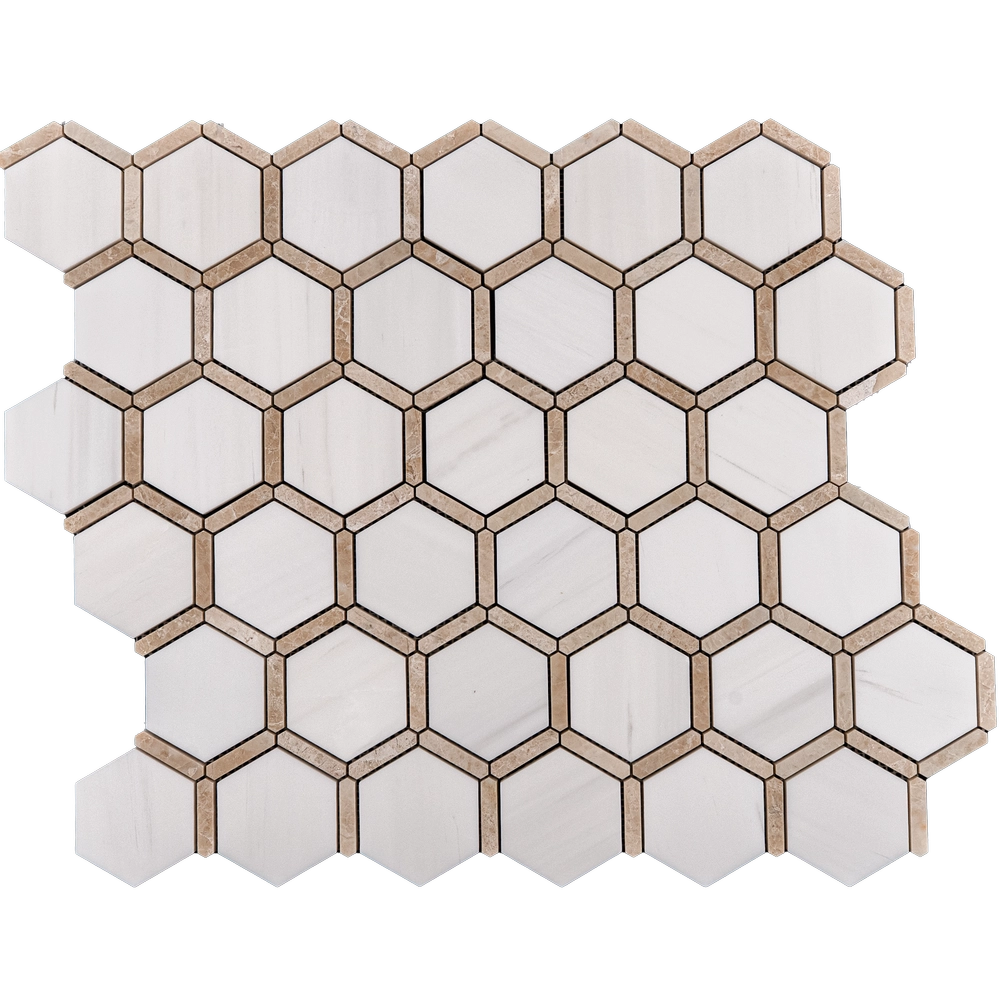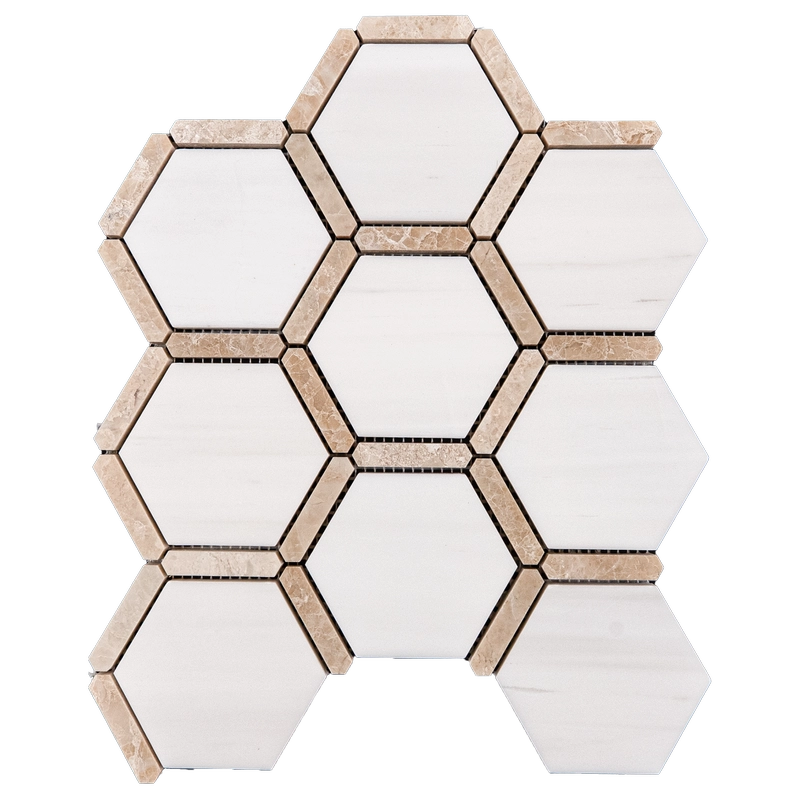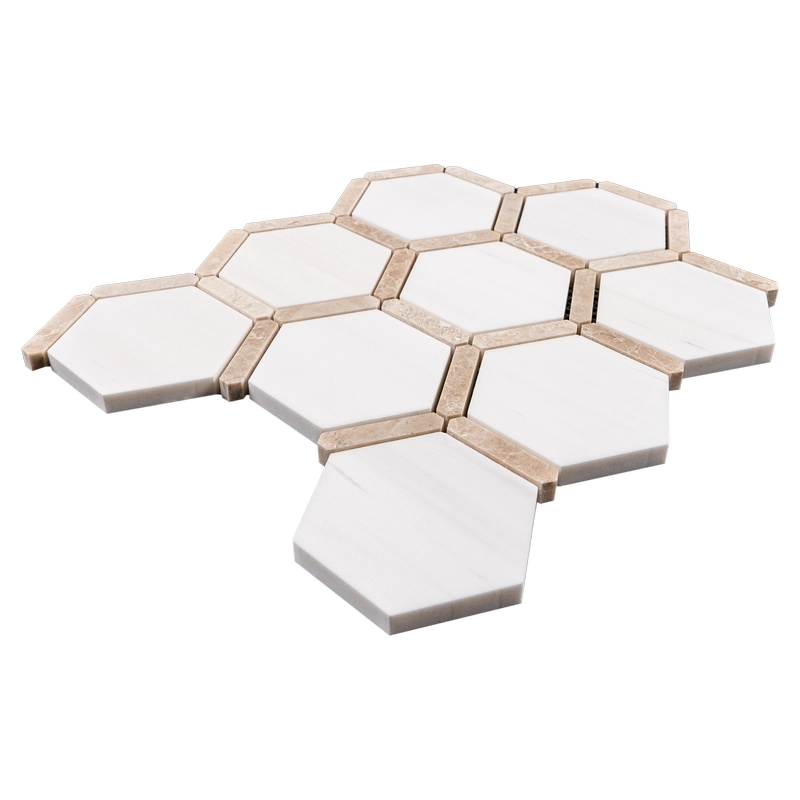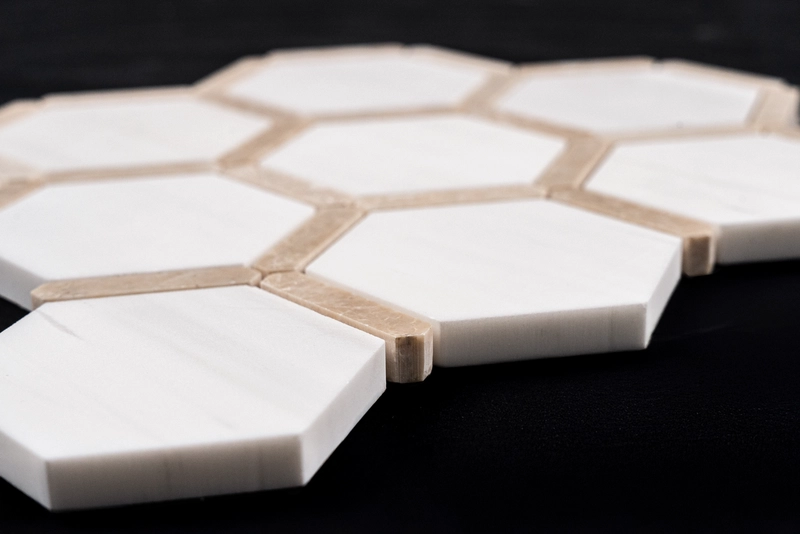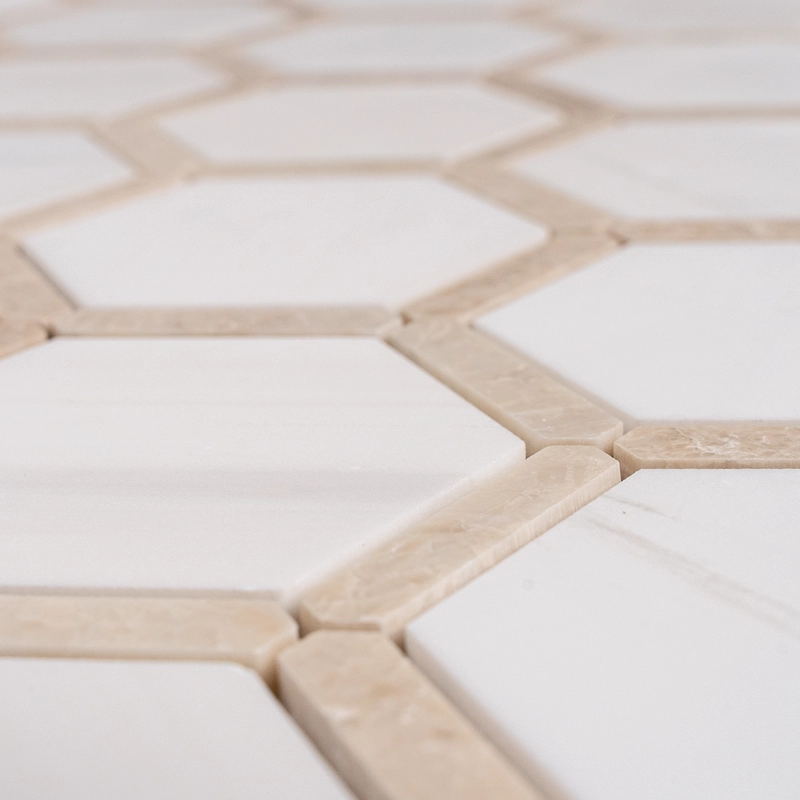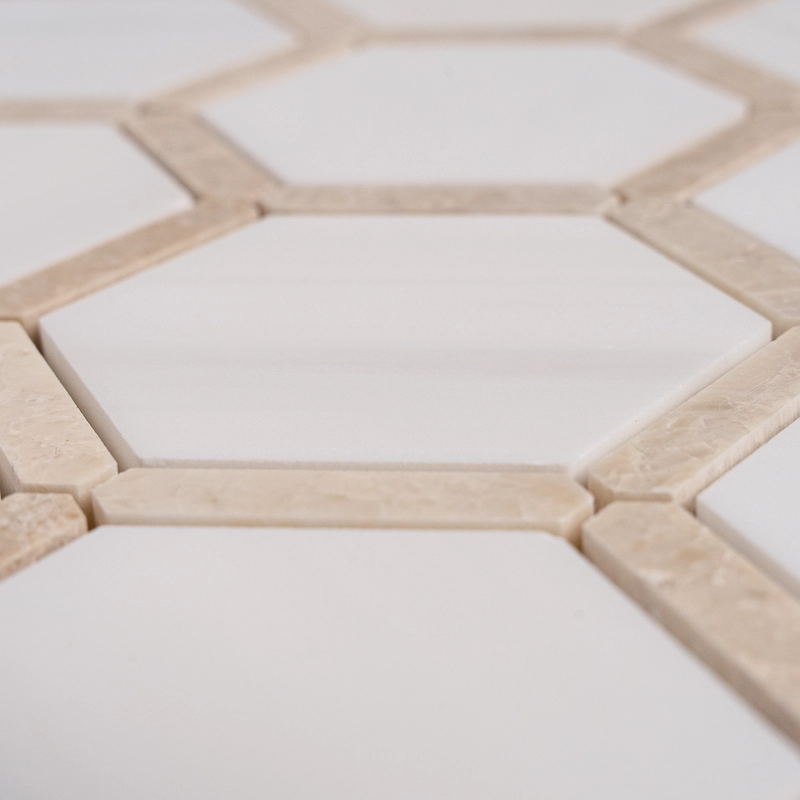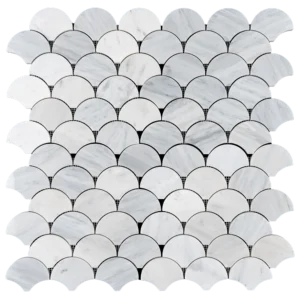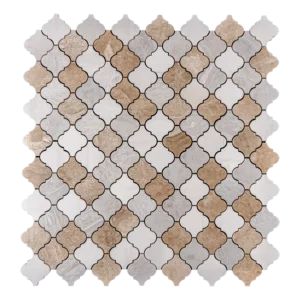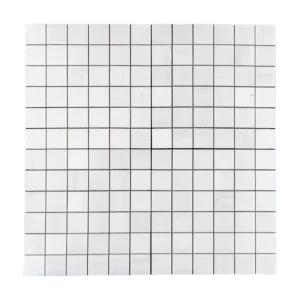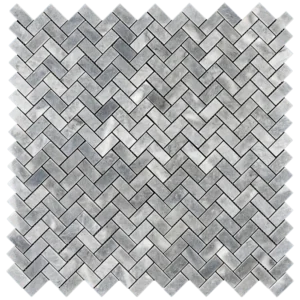Installation Guide – Touch Polished Marble Mosaic Tile (Dolomite & Royal Beige)
Material Notes
This mosaic features a harmonious two-stone blend: crisp Dolomite (white) and warm Royal Beige marble, both polished to a smooth, reflective finish. Sheets are mesh-mounted (~12″x12″) with factory chip spacing. Suitable for walls, backsplashes, shower surrounds, and light-traffic residential floors. Polished stone may be slippery when wet.
Step 1: Surface Preparation
Ensure the substrate is clean, dry, structurally sound, and flat (≤1/8″ in 10′). Patch or skim as necessary. Approved substrates include cement backer board, cured concrete, or mortar bed meeting ANSI standards. In wet areas, install an ANSI A118.10 waterproofing membrane per manufacturer instructions.
Step 2: Dry Layout & Color Blending
Dry-lay multiple sheets to evenly distribute the white and beige tones. Stagger sheet seams and trim mesh edges so mosaics interlock and the grid becomes invisible. Snap level reference lines to maintain straight courses, and plan perimeter and fixture cuts carefully.
Step 3: Adhesive (White Thin-Set) Application
Use white, polymer-modified thin-set (ANSI A118.4/A118.15) suitable for natural stone. Avoid premixed mastics, especially in wet zones. White thin-set ensures uniform color and prevents shadowing through Dolomite.
Trowel & Technique:
3/16″ V-notch (or 1/4″x3/16″ V-notch) on flat substrates.
Key in with flat side, comb in one direction, lightly flatten ridges to prevent telegraphing through chips.
Work in areas you can cover in 10–15 minutes to avoid skinning.
Step 4: Setting the Sheets
Align sheets along layout lines. Press in with a rubber grout float or beating block for full contact and a flat plane. Maintain factory chip spacing; do not butt-joint. Use wedge spacers if necessary. Remove excess thin-set immediately with a soft, barely damp sponge. For paper-faced sheets, follow the paper-out method, lightly wet after initial grab, then remove paper and true up joints.
Step 5: Cutting & Detailing
Use a wet saw with a continuous-rim diamond blade; apply painter’s tape on the cut line to minimize chip-out. Use mosaic nippers sparingly for small trims; dress exposed edges with a rubbing stone. Finish edges with stone trim, metal profiles, or matching moldings as desired.
Step 6: Grouting (Polished Stone)
Allow thin-set to cure (typically 24 hours). Use unsanded grout for joints ≤1/8″ to protect polished surfaces. Test grout color with a small mockup; light neutral or ivory grouts harmonize with both stones. Avoid very dark grouts that accentuate edges. Optionally, apply a marble-safe grout release or pre-seal. Pack joints diagonally and clean with minimal water to prevent shading.
Step 7: Sealing
After grout cures (~72 hours), apply a penetrating, breathable marble-safe sealer. Re-seal every 1–2 years depending on exposure, particularly in wet or high-use areas.
Maintenance
Clean only with pH-neutral, non-abrasive stone cleaners. Avoid acids, vinegar, bleach, or abrasive pads. In showers, squeegee or wipe dry after use; use marble-safe scale removers as needed.
Movement Joints
Honor expansion joints per TCNA EJ171 at perimeters, changes of plane, and large expanses. Use 100% stone-safe silicone at corners and where tile meets other materials.
Important Notes & Disclaimer
Natural stone varies in tone and veining; blend sheets before installation. Slight size or thickness tolerances are normal. Protect polished faces during handling and cleaning with soft tools. Stonemarket USA is not responsible for improper installation or substrate issues. Professional installation is recommended.


